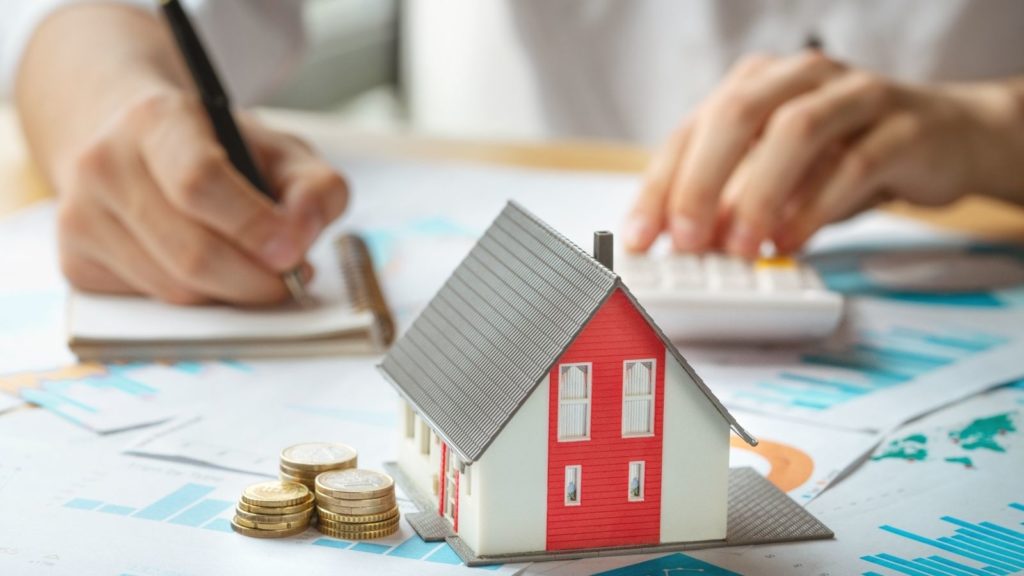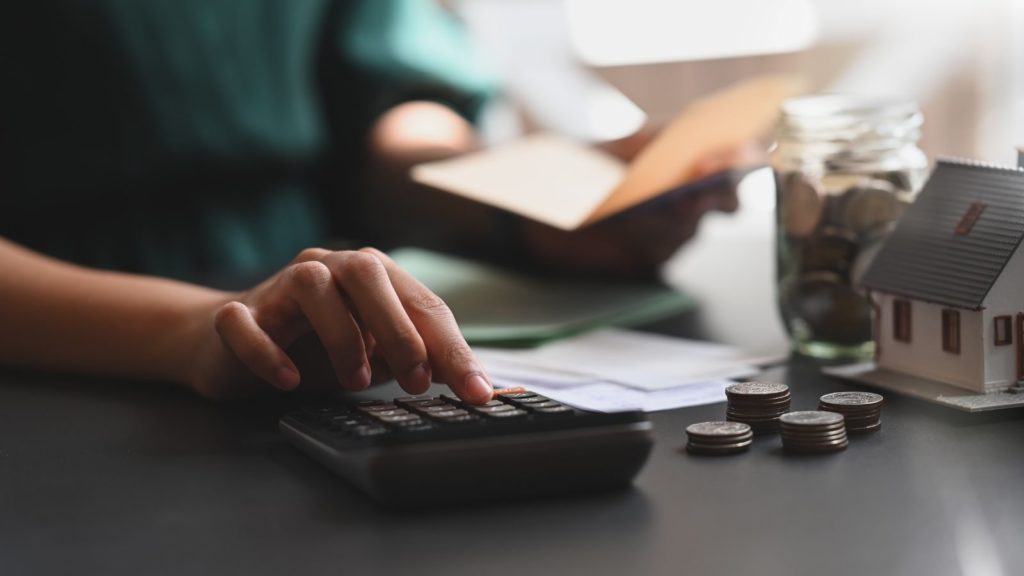Buying a house is not a task you take on lightly; it’s not an impulse purchase. Purchasing real estate is a complicated, multi-layered, time-consuming process. If you’re prepared, you’ll sail through the experience with excitement and anticipation. But if you don’t know what’s coming, you could get thrown for a loop. Here are the six steps to buying a house.
Step One: Get Your Money in Order
Even if you apply for a home mortgage loan, there are tens of thousands of dollars you’ll need to invest when buying your first home. If you’re going to apply for a conventional home mortgage loan, you’ll need a down payment equal to twenty percent of the loan amount. That means that if you’re buying a $300,000 house, you’ll need around $60,000 cash to get the ball rolling.
In addition to the down payment, the buyer submits an earnest money deposit with their offer, usually between one and three percent of the home’s sales price. This means you’ll need to pay between $3,000 and $9,000.

Furthermore, buyers pay closing costs at the end of the transaction. Closing costs encompass all of the services and fees accrued during the purchase. Closing costs for a mortgage range between two and five percent, on average, which is another cash-out-of-pocket expense of $6,000-$15,000.
There are other loans available, such as FHA, VA, and USDA loans. These loans can lower or eliminate down payments and closing costs for people who qualify, such as those with low income, damaged credit, military members and their spouses, or people buying a property in rural areas.
Step Two: Prepare Your Credit Score and Debt-to-Income Ratio
Equally important to the amount of money you put down on a house is the credit you’ve established at the time of your home mortgage loan application.
It’s critical that you do not change jobs or make any major purchases until after you’ve closed on the house. The bank will run your credit and recheck your accounts on the day of closing. If things don’t align, they could retract their offer to loan you the money.
Your credit score should be at a minimum of 620, but the higher it is, the better and the better rates you’ll qualify for. Your debt-to-income ratio, also called a DTI, is your total monthly debt divided by your gross monthly income. This number should equal 43 percent at the highest, but the lower it is, the better.
You can improve your credit score and your DTI by paying off outstanding accounts, being current on payments, and paying down credit cards and loans. Don’t close the accounts, though; just pay them down. Closing the accounts will negatively affect your credit.
Step Three: Hire the Right Real Estate Agent
The real estate agent with whom you choose to work will set the tone for your experience and heavily influence your purchasing decisions. They don’t just show you homes; they also educate you about what to look for in a home, will submit and negotiate offers on your behalf, help you understand contracts, and will guide you through the closing process. As tempting as it is to start searching the internet for your dream home, hold off until you’ve consulted with a professional real estate agent.

Work with an agent who is an expert in the area you want to live in and has experience with properties similar to the type you’re trying to buy. Interview at least three real estate agents until you find one who makes you feel confident going forward.
Step Four: Shop Lenders and Get Pre-Approved
Many first-time buyers don’t realize that they should actually get pre-approved for their home mortgage loan before they start shopping for houses. It’s imperative to get pre-approval so you’ll know your budget and be empowered to purchase once you do find the right home.
More often than not, a seller will choose a seller with pre-qualification because there’s less risk involved, and the timeline can be expedited. The lengthy loan application process will be behind you so that you can get to the closing table faster.
Compare lenders. Lenders are responsible for the majority of your closing costs, and they have varying rates and terms. Get estimates from at least three lenders before making a decision. You may also find that having multiple estimates might give you bargaining power to negotiate with the lender of your choice.
Your real estate agent may also have a good recommendation for a lender.
Step Five: House-Hunting, Offers, and Negotiations
Be realistic with your wish list and your budget. Your agent will help you understand how much house your money can buy and what areas are affordable for you.
When you find a home you’d like to purchase, your agent will help you submit an offer and negotiate on your behalf where appropriate.
Don’t emotionally attach to any house until you’ve signed the last documents and have the keys. You may find yourself up against competing offers.

Step Six: The Closing Process
The closing process can feel lengthy and stressful, so be patient and trust your agent to guide you. During this time, the house you’re buying has to be appraised and inspected to ensure that it’s worth the amount that you’re borrowing and that it’s in good condition, including the foundation, roof, plumbing, electrical, HVAC, and more.
If the inspection or appraisal reveals problems, you could find yourself renegotiating the price to accommodate for repairs. However, if the issues are insurmountable, you may find that the deal falls through. This is another reason it’s a good idea not to get emotionally invested in a property until the deal is done.
Three days before closing, your mortgage lender will provide you with a statement of actual closing costs, which shouldn’t differ much from your initial estimate. And, the day before closing, you’ll do a final walkthrough to make sure that everything is in the same condition (or better!) than when you saw the property last.
With the advent of technology, you can now sign many of your closing documents digitally and attend closing meetings virtually.
Ask your real estate agent for more information about the steps to buying a home.
Even if you apply for a home mortgage loan, there are tens of thousands of dollars you’ll need to invest when buying your first home. If you’re going to apply for a conventional home mortgage loan, you’ll need a down payment equal to twenty percent of the loan amount. That means that if you’re buying a $300,000 house, you’ll need around $60,000 cash to get the ball rolling.
In addition to the down payment, the buyer submits an earnest money deposit with their offer, usually between one and three percent of the home’s sales price. This means you’ll need to pay between $3,000 and $9,000.

Furthermore, buyers pay closing costs at the end of the transaction. Closing costs encompass all of the services and fees accrued during the purchase. Closing costs for a mortgage range between two and five percent, on average, which is another cash-out-of-pocket expense of $6,000-$15,000.
There are other loans available, such as FHA, VA, and USDA loans. These loans can lower or eliminate down payments and closing costs for people who qualify, such as those with low income, damaged credit, military members and their spouses, or people buying a property in rural areas.
Have Questions? Ask Robin!
Give Robin Reed a call today to learn more about local areas, discuss selling a house, or tour available homes for sale.


